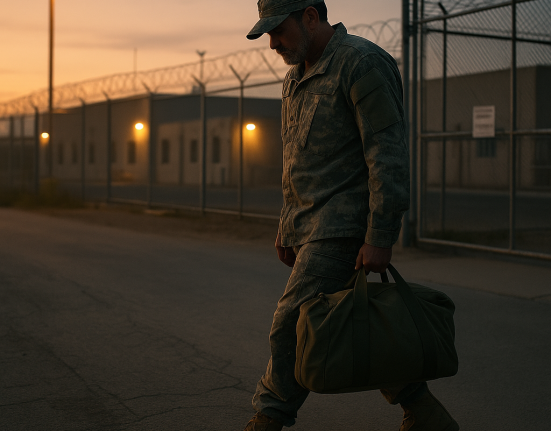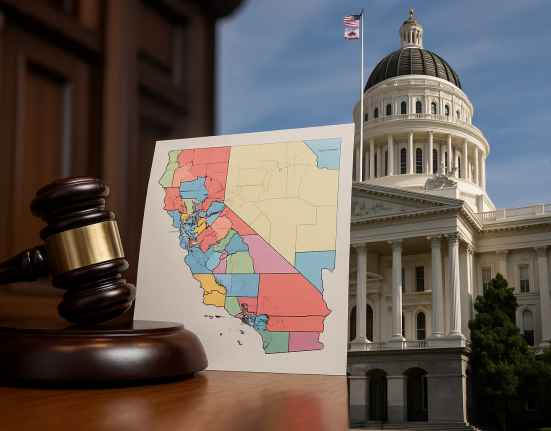The Federal Aviation Administration (FAA) announced Sunday that it will lift all remaining flight restrictions at 40 major U.S. airports, marking the end of a turbulent chapter in aviation brought on by the nation’s longest government shutdown. Airlines will resume full schedules Monday at 6 a.m. EST, according to a joint statement from Transportation Secretary Sean P. Duffy and FAA Administrator Bryan Bedford.
The FAA cited improvements in staffing and safety conditions at air traffic control facilities as the primary reason for lifting the restrictions, which had cut thousands of flights nationwide over the past five weeks. The unprecedented order, initially issued on November 7, reduced flight capacity by up to 10% across some of the nation’s busiest hubs, including New York, Chicago, Los Angeles, Atlanta, and Dallas.
While travelers and airlines welcomed the announcement, the decision highlights a broader question: who actually has the authority to restrict and restore flight operations during a shutdown—and how such power can shape both the economy and political negotiations in Washington.
FAA’s Legal Authority and Administrative Oversight
The FAA, under the U.S. Department of Transportation (DOT), derives its authority from Title 49 of the U.S. Code, which allows it to regulate airspace and manage flight operations to ensure safety. During a government shutdown, the Office of Management and Budget (OMB) dictates which federal functions are “essential,” meaning they must continue even without appropriations. Air traffic control is one of those essential functions—controllers are required to work without pay until Congress authorizes funding.
However, the Secretary of Transportation and the FAA Administrator retain broad discretion to impose or lift operational limits if safety is deemed at risk. In this case, Duffy and Bedford used their administrative power to reduce air traffic volume, citing growing fatigue and attrition among unpaid controllers. The order was reviewed by the National Airspace System Safety Team, a specialized FAA unit responsible for evaluating systemic risk.
That means the decision to restrict—and later to lift—flights was entirely within executive branch authority, requiring no new legislation or congressional approval. The agency can act preemptively when operational stress or safety thresholds are reached, making this a rare but lawful exercise of emergency administrative power.
Political Fallout and the Democrats’ Shutdown Standoff
The decision to lift the flight restrictions comes just days after the 43-day government shutdown officially ended on November 12, following a contentious standoff between the Trump administration and congressional Democrats.
During the shutdown, Democratic leaders ultimately voted to advance a continuing resolution after the FAA issued warnings that the national airspace system was nearing a “critical failure point.” Behind the scenes, airline executives, union leaders, and state governors from both parties lobbied for an immediate resolution, citing economic and public safety concerns.
Multiple reports suggest the FAA’s flight cuts served as a tipping point in the political negotiations. Sources within the House Transportation and Infrastructure Committee confirmed that the growing disruption—especially at major business hubs like Atlanta and New York—intensified pressure on Congress.
Democrats, who had initially refused to pass temporary funding extensions without broader concessions on immigration and social programs, began to face mounting backlash from the public and key constituencies in labor and travel industries. Economists estimate that the flight restrictions alone cost the U.S. economy nearly $1.2 billion per week in lost productivity, tourism, and supply chain delays.
By the time the FAA announced its 6% reduction on November 10, both sides were in late-stage talks, and within 48 hours, a bipartisan deal was reached to end the impasse—an outcome that some analysts say effectively forced Democrats to yield under mounting logistical and political strain.
Workers Still Feeling the Impact
Although air traffic controllers have returned to work, many federal employees remain unpaid for the duration of the shutdown and are awaiting back pay, which is expected to be processed over the coming week. The National Air Traffic Controllers Association (NATCA) said in a statement Sunday that “fatigue, morale, and retention remain serious concerns,” warning that it could take months to fully stabilize operations.
Controllers missed two paychecks during the shutdown, and union officials reported increases in sick calls and resignations as workers struggled to cover basic expenses. Even with operations resuming, the FAA faces a backlog in training and certification programs paused since early October.
For many, the end of the restrictions doesn’t mean the end of the crisis. “The skies may be open again, but the people who make them safe are still recovering from 43 days without pay,” said NATCA spokesperson Andrea Watson. “This shutdown exposed how fragile our aviation infrastructure becomes when politics interferes with public service.”
The Path Ahead for Airlines and Passengers
Airlines expressed optimism about recovering in time for the Thanksgiving travel surge, the busiest period of the year. According to flight data from Cirium, less than 1% of flights were canceled over the weekend, down from a peak of nearly 3,000 daily cancellations on November 9. Airlines have begun reinstating full schedules and clearing passenger backlogs.
Industry analysts warn, however, that it may take weeks before route frequencies and staffing stabilize. The International Air Transport Association (IATA) estimates that the U.S. aviation industry lost $8.4 billion in total revenue during the shutdown. Some carriers have already begun requesting compensation for “government-induced operational losses.”
The FAA, meanwhile, has launched a review into carrier compliance during the restriction period, following reports that several airlines exceeded mandated flight caps. “The agency is reviewing and assessing enforcement options,” the FAA’s statement read, though it did not specify potential penalties.
Conclusion: Authority, Accountability, and the Cost of Shutdowns
The lifting of the FAA’s flight restrictions signals a return to normalcy for U.S. aviation, but it also underscores a deeper truth: essential infrastructure remains vulnerable to political brinkmanship. The FAA’s authority to regulate airspace kept the system functioning, but at immense cost to workers, airlines, and the public.
As one congressional aide put it, “The FAA may have landed the plane, but Congress nearly ran out of runway.”
The administration’s ability to impose and lift these restrictions without congressional input reinforces the power of the executive branch during crises—but it also highlights the fragility of depending on unpaid essential workers to keep America flying.








Leave feedback about this
You must be logged in to post a comment.